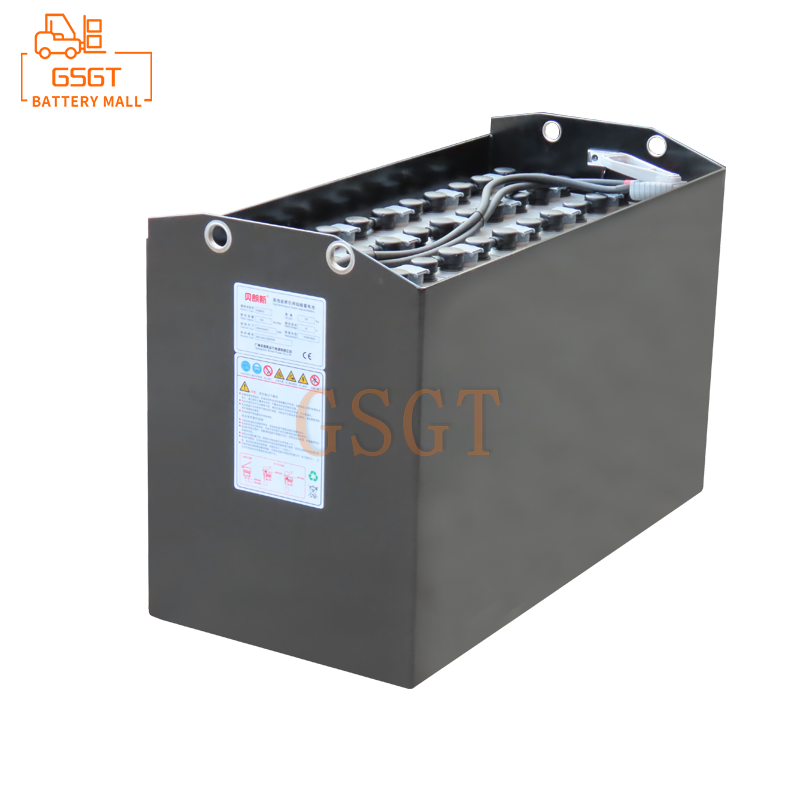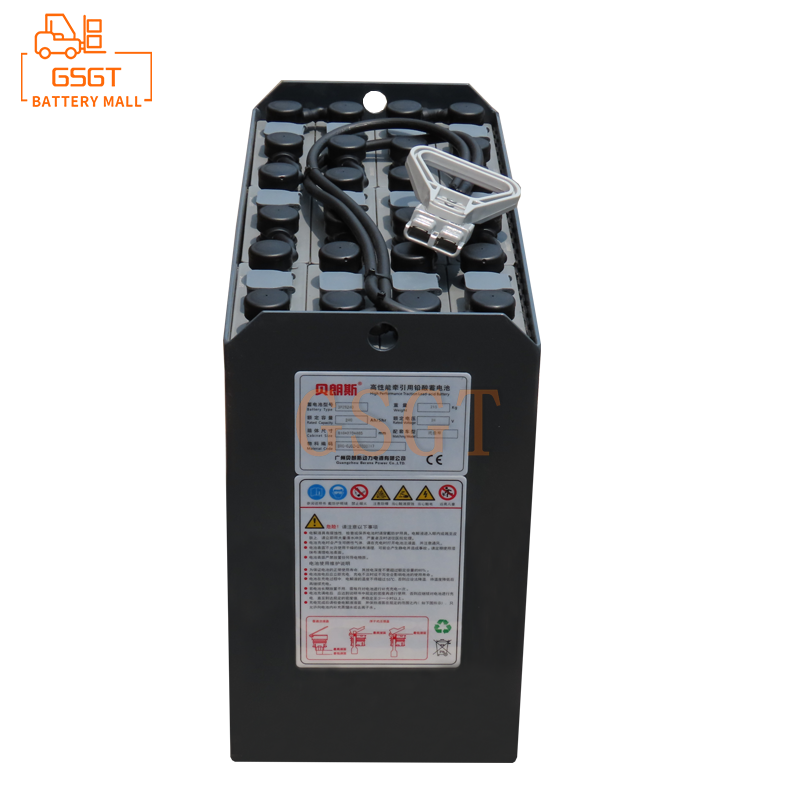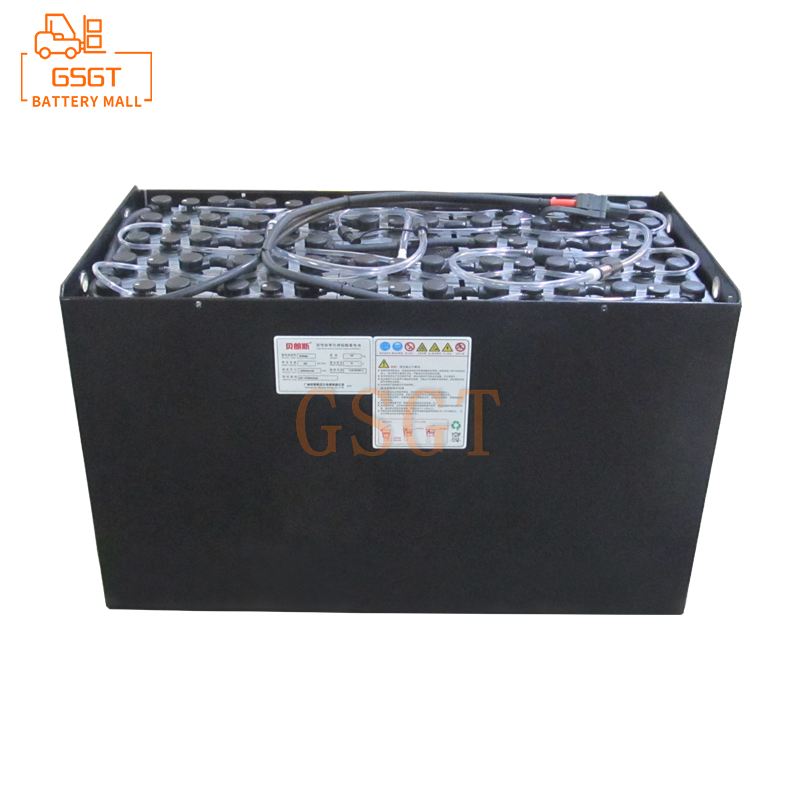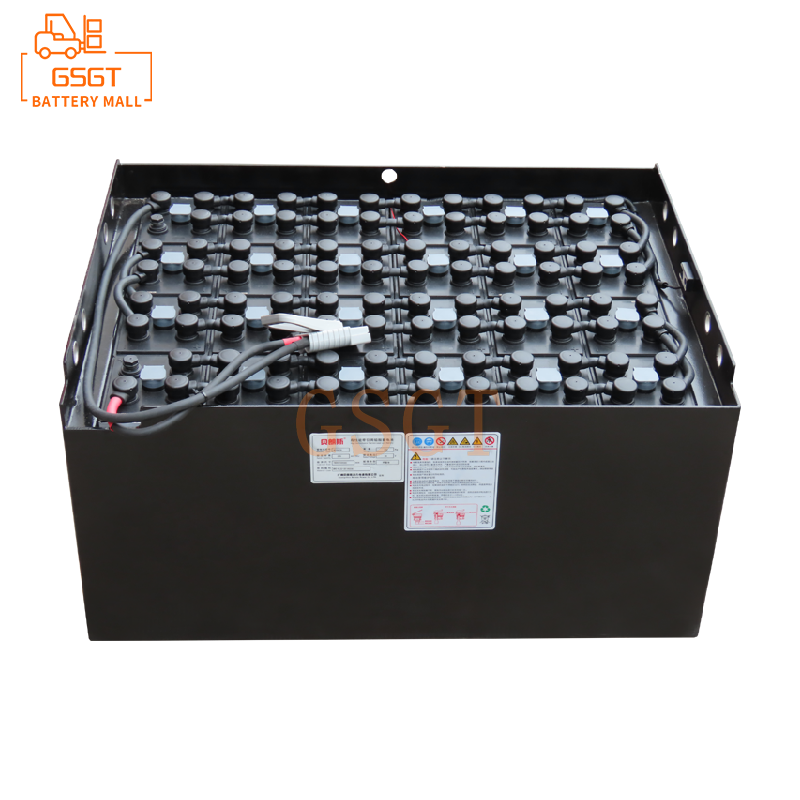Time:2025-06-11 16:01:02
Browse:635
Introduction
In modern logistics and industrial production, forklifts, as key material handling equipment, their performance and efficiency directly affect the operating costs and production capacity of enterprises. Lead-acid batteries, as one of the main power sources of forklifts, play a crucial role in the operation of forklifts. The design of lead-acid batteries for forklifts involves multiple aspects, among which the design of volume and weight is particularly crucial. They not only affect the performance of the battery itself but are also closely related to the overall performance, safety and usage cost of the forklift. Reasonable design of the volume and weight of lead-acid batteries for forklifts is of great significance for improving the working efficiency of forklifts, extending the service life of batteries and reducing operating costs. Therefore, an in-depth exploration of the precautions for the design volume and weight of lead-acid batteries in forklifts has extremely high practical value.
The basic principle of lead-acid batteries and the influencing factors on volume and weight
An overview of the Working Principle of Lead-acid batteries
Lead-acid batteries achieve the mutual conversion of electrical energy and chemical energy through chemical reactions. During the discharge process, lead dioxide on the positive plate reacts with lead on the negative plate under the action of sulfuric acid electrolyte to form lead sulfate, while releasing electrons and generating an electric current. During charging, under the effect of an external power source, lead sulfate decomposes back into lead dioxide and lead, restoring the battery to its initial state. This chemical reaction process determines the basic performance of lead-acid batteries and also has an impact on their volume and weight.
Internal structural factors affecting volumetric weight
Plate design: Plates are the core components of lead-acid batteries. Their thickness, area and quantity directly affect the battery's capacity and volumetric weight. Thicker plates can hold more active substances, thereby increasing the battery capacity, but they will also increase the weight and volume of the battery. For instance, in some forklift application scenarios that require high capacity and long range, a design with thicker plates might be adopted, but this requires a trade-off between increased volume and weight and improved range. The larger the area of the plates, the more active substances will be involved in the electrochemical reaction, and the battery capacity will also increase accordingly. However, increasing the area of the plates often requires more space to accommodate them, which leads to an increase in the battery volume. Meanwhile, more active substances will also increase the weight of the battery. An increase in the number of plates can also enhance the battery capacity, as more plates mean a larger reaction area. But this will undoubtedly further increase the volume and weight of the battery. When designing, it is necessary to precisely calculate the thickness, area and quantity of the plates based on the actual needs of the forklift to achieve the best balance between volume weight and performance.
Electrolyte characteristics: The electrolyte plays a role in conducting ions in lead-acid batteries, and its concentration and volume have a significant impact on battery performance and volumetric weight. Generally speaking, a higher concentration of sulfuric acid electrolyte can enhance the electromotive force and charge and discharge efficiency of the battery, but an excessively high concentration may accelerate the corrosion of the plates and affect the battery's lifespan. Meanwhile, in order to ensure that the electrolyte can fully cover the plates and provide a good ion conduction environment, a certain volume of electrolyte is required. Excessive volume of electrolyte will increase the overall volume and weight of the battery. If the volume is too small, it may cause the plates to not fully participate in the reaction, reducing the battery's performance. Therefore, choosing the appropriate electrolyte concentration and precisely controlling its volume are crucial for optimizing the volumetric weight design of lead-acid batteries.
The function and influence of the separator: The separator is located between the positive and negative plates. Its main function is to prevent short circuits between the positive and negative plates and at the same time allow ions in the electrolyte to pass through. The material, thickness and structure of the separator have a certain influence on the volume and weight of the battery. For example, although using thicker separators can enhance the safety of the battery, it will occupy more space and increase the battery volume. However, thinner partitions may pose certain risks in terms of safety. In addition, the material of the partition also affects its weight. Some high-performance partition materials may be relatively heavy, which needs to be comprehensively considered during the design. Reasonable selection of the material, thickness and structure of the separator can not only ensure the safety performance of the battery, but also effectively control the volume and weight of the battery.
The relationship between the volume and weight of lead-acid batteries in forklifts and the performance of forklifts
The influence on the power performance of forklifts
Voltage and capacity matching: The motor of a forklift requires specific voltage and power input to ensure normal operation. The voltage output of lead-acid batteries directly affects the power output of forklifts. If the battery voltage is too low, the forklift motor cannot obtain sufficient electrical energy, which will lead to problems such as difficulty in starting the forklift, slower travel speed, and weak ability to lift goods. For instance, for a forklift designed with a voltage of 48V, if a lead-acid battery with a voltage lower than 48V is used, the forklift may not be able to reach the rated lifting height and speed when fully loaded with goods. Battery capacity is also of crucial importance. Batteries with too small capacity cannot provide forklifts with continuous and stable power, causing the forklifts to need to be charged in a short time and seriously affecting work efficiency. However, batteries with overly large capacity, although they can offer longer driving range, will increase the volume and weight of the battery, which may have a negative impact on the handling of forklifts. Therefore, precisely matching the voltage and capacity required by forklifts is the key to ensuring their power performance, which also demands that this factor be fully considered when designing the volume and weight of lead-acid batteries.
Discharge characteristics influence: The discharge characteristics of lead-acid batteries, such as discharge depth and discharge current, have a significant impact on the power performance of forklifts. Different forklift working scenarios have different requirements for battery discharge characteristics. Under conditions of frequent starts, braking and heavy-load operations, forklifts need batteries capable of providing large current discharges to meet the instantaneous high power demands. If the battery's discharge current capacity is insufficient, the forklift will appear sluggish when starting and accelerating. For instance, in a logistics warehouse, forklifts need to frequently move goods. Each time they move, they have to start quickly and lift the goods, which requires lead-acid batteries to provide a sufficiently large discharge current in a short period of time. In addition, the depth of discharge also affects the service life of the battery and the power performance of the forklift. Excessive discharge can lead to sulfation of the battery plates, reducing the battery's capacity and service life. At the same time, it will also cause the forklift's power to gradually decline in later operation. Therefore, when designing the volume and weight of lead-acid batteries, it is necessary to combine the actual working scenarios of forklifts and optimize the discharge characteristics of the batteries to ensure the stable power performance of forklifts.
The influence on the handling stability of forklifts
Weight distribution and center of gravity: As an important component of forklifts, lead-acid batteries account for a relatively large proportion of the total weight of the forklift. The weight distribution of the battery has a significant impact on the center of gravity position of the forklift. If the battery is installed in an unreasonable position, causing the center of gravity of the forklift to be too high or shift, safety accidents such as overturning are likely to occur when the forklift is traveling, turning or lifting goods. For instance, in narrow-aisle forklifts, due to the narrow aisle, the handling stability of the forklift is required to be extremely high. If the lead-acid battery is too heavy and installed improperly, causing the center of gravity of the forklift to be too high, it will be more likely to lose balance when turning. Therefore, when designing the weight and installation position of lead-acid batteries, the overall weight distribution of the forklift must be fully considered to ensure that the center of gravity of the forklift is in a reasonable position, so as to improve the handling stability of the forklift.
Volume compatibility: The space in the forklift battery compartment is limited, and the volume of lead-acid batteries must be perfectly compatible with the battery compartment. If the battery is too large in size to be smoothly installed in the battery compartment or is not firmly fixed after installation, the battery may shake during the forklift's operation, affecting the stability of the forklift's control. Moreover, an overly large battery volume may encroach on the space of other components of the forklift, affecting its normal layout and maintenance. On the contrary, if the battery is too small in size, there will be a large movement space in the battery compartment, which will also cause the battery to shake during driving and have an adverse effect on the operation of the forklift. Therefore, precisely designing the volume of lead-acid batteries and ensuring a tight fit with the battery compartment of forklifts is crucial for safeguarding the operational stability of forklifts.
Design Considerations for the volume and weight of lead-acid batteries in forklifts
Designed based on the type of forklift and the usage scenario
The requirements for different types of forklifts vary: Different types of forklifts, such as counterbalanced forklifts, reach trucks, and electric pallet trucks, have different requirements for the volume and weight of lead-acid batteries. Counterbalanced forklifts are typically used to handle heavy goods and require considerable power and endurance. Therefore, they may need large-capacity and heavy lead-acid batteries to provide sufficient electrical energy and balance the counterweight. The reach truck mainly operates in environments with limited space such as indoor warehouses, and has high requirements for the flexibility of the forklift. This demands that the lead-acid battery be small in size and light in weight to facilitate the operation of the forklift in narrow Spaces. Electric pallet trucks focus on short-distance and frequent cargo handling, and their requirements for the volume and weight of batteries are also different from those of other types of forklifts. When designing lead-acid batteries, it is essential to fully understand the characteristics and requirements of different types of forklifts and carry out targeted volume and weight design.
Consideration of working environment factors: The working environment of forklifts is complex and diverse. Factors such as temperature, humidity, and terrain can all affect the performance and volume weight design of lead-acid batteries. In high-temperature environments, the evaporation rate of the electrolyte in lead-acid batteries increases, and the chemical reactions inside the battery intensify, which may lead to a shortened battery life. To ensure the normal operation of the battery in high-temperature environments, it may be necessary to increase the amount of electrolyte or adopt special heat dissipation designs, which undoubtedly will increase the volume and weight of the battery. In a low-temperature environment, the viscosity of the electrolyte in a battery increases, the internal resistance rises, and the battery capacity will decline. To enhance the battery's performance at low temperatures, it may be necessary to use heating devices or special low-temperature performance electrolytes, which will also have an impact on the battery's volumetric weight. In addition, in a humid environment, the battery needs to have good waterproof and moisture-proof performance. It may be necessary to increase the thickness of the protective casing, thereby increasing the volume and weight of the battery. When operating on uneven terrain, forklifts experience greater vibration, which places higher demands on the battery's fixation and shock resistance performance. This may also lead to an increase in the battery's volume and weight. Therefore, when designing the volume and weight of lead-acid batteries, it is necessary to fully consider the working environment factors of forklifts to ensure that the batteries can operate stably in various harsh environments.

$2450

$800

$3260

$5710

MESSAGE
Professional And Efficient
Security
Affordable Price
Professional Services